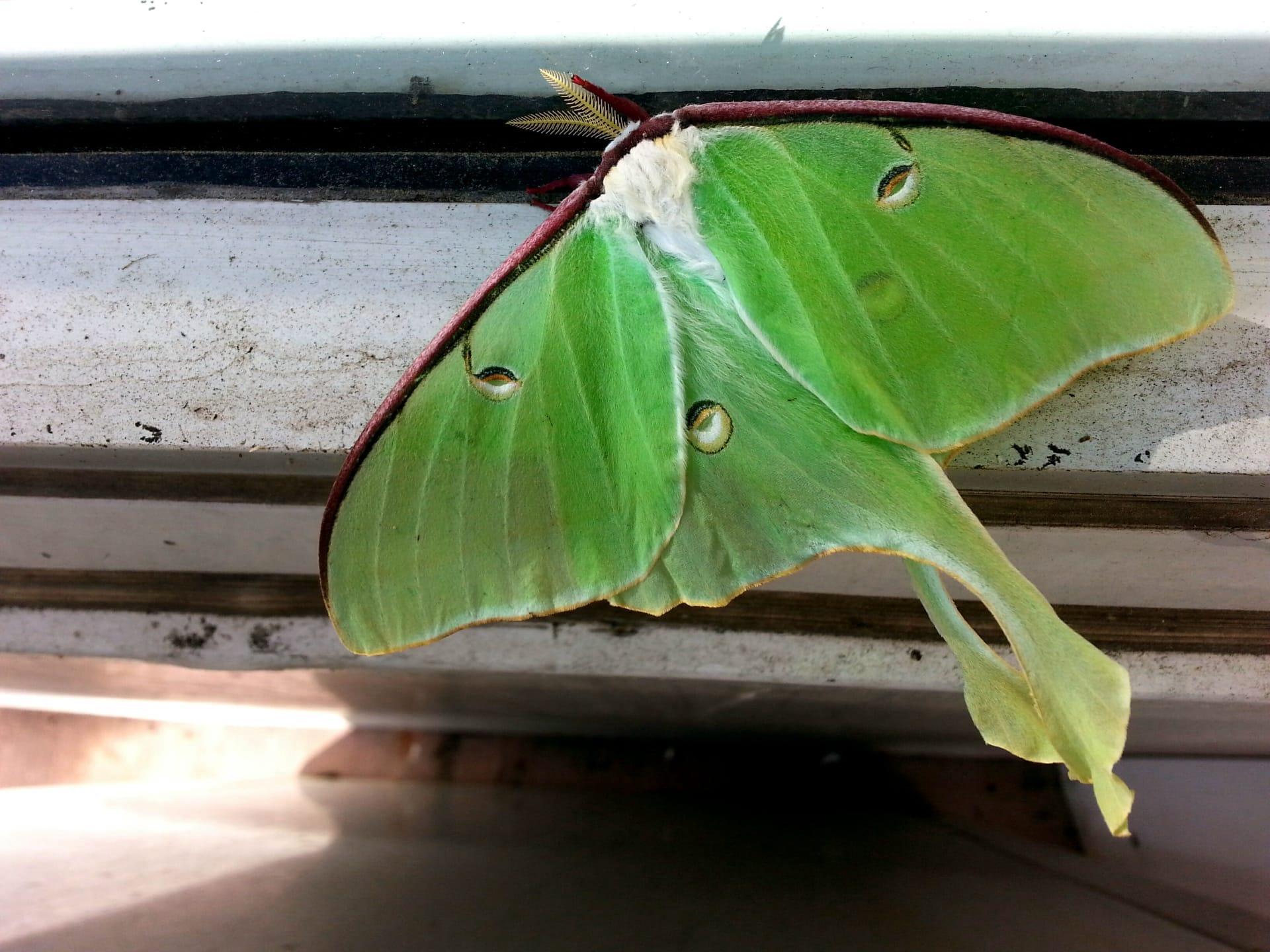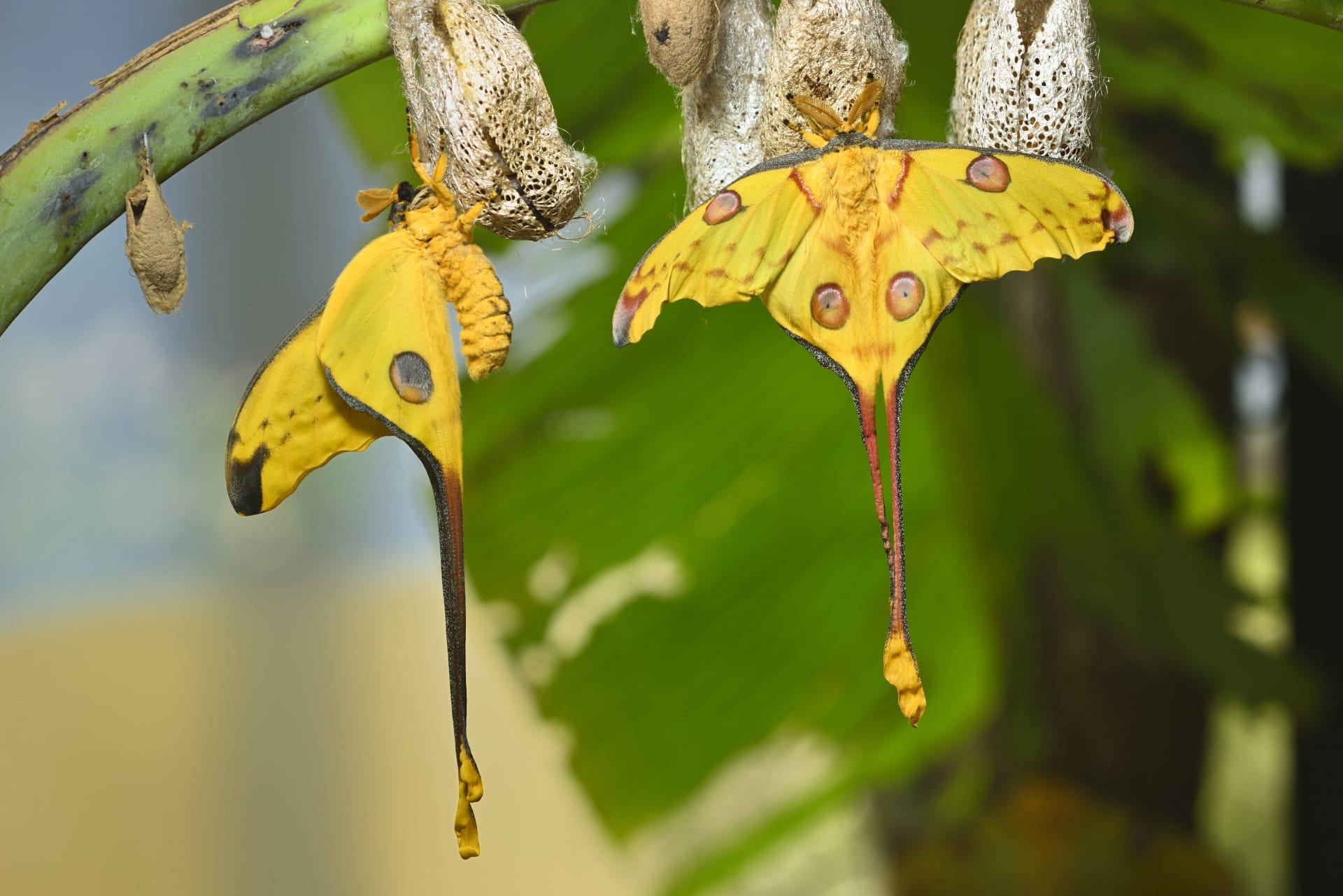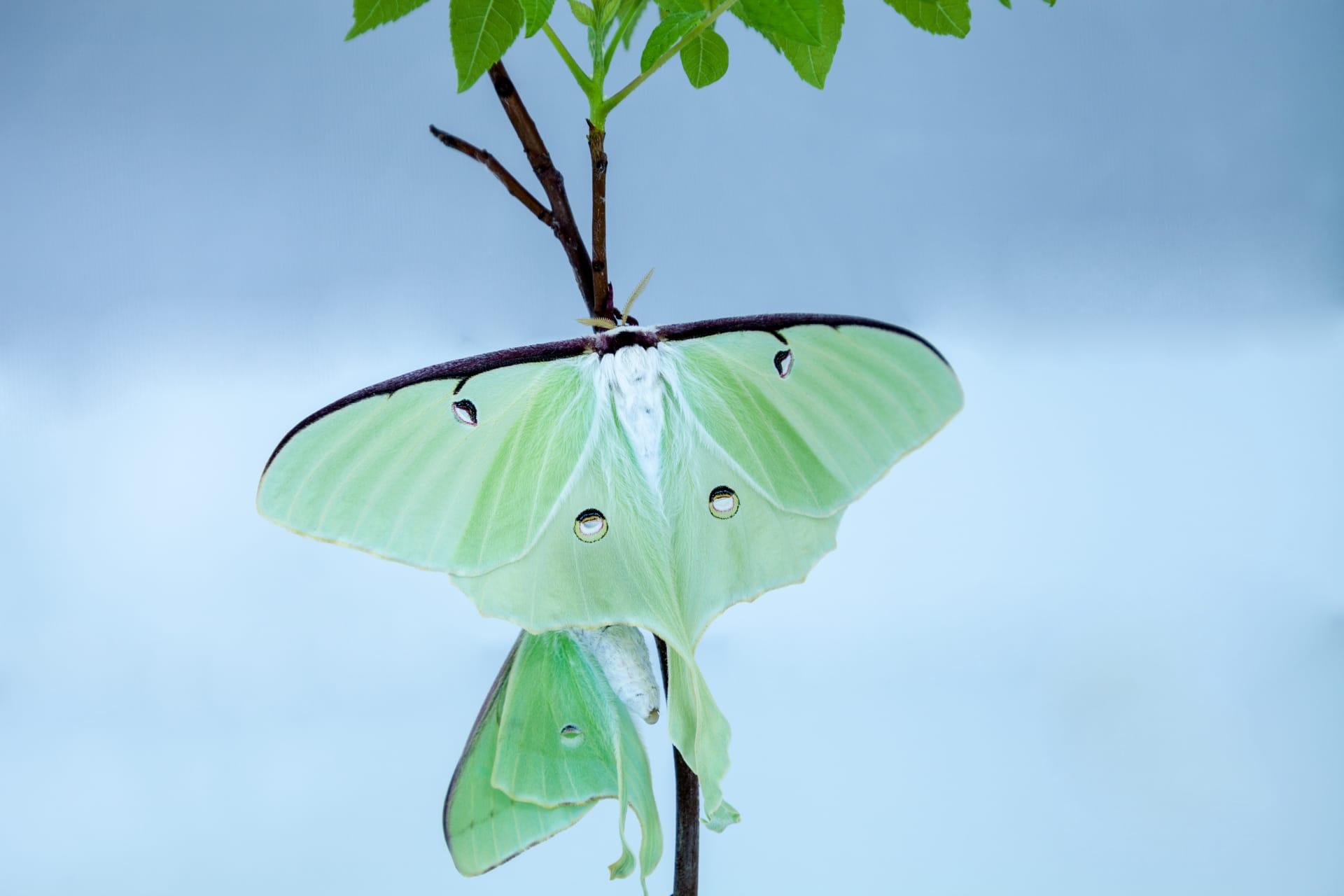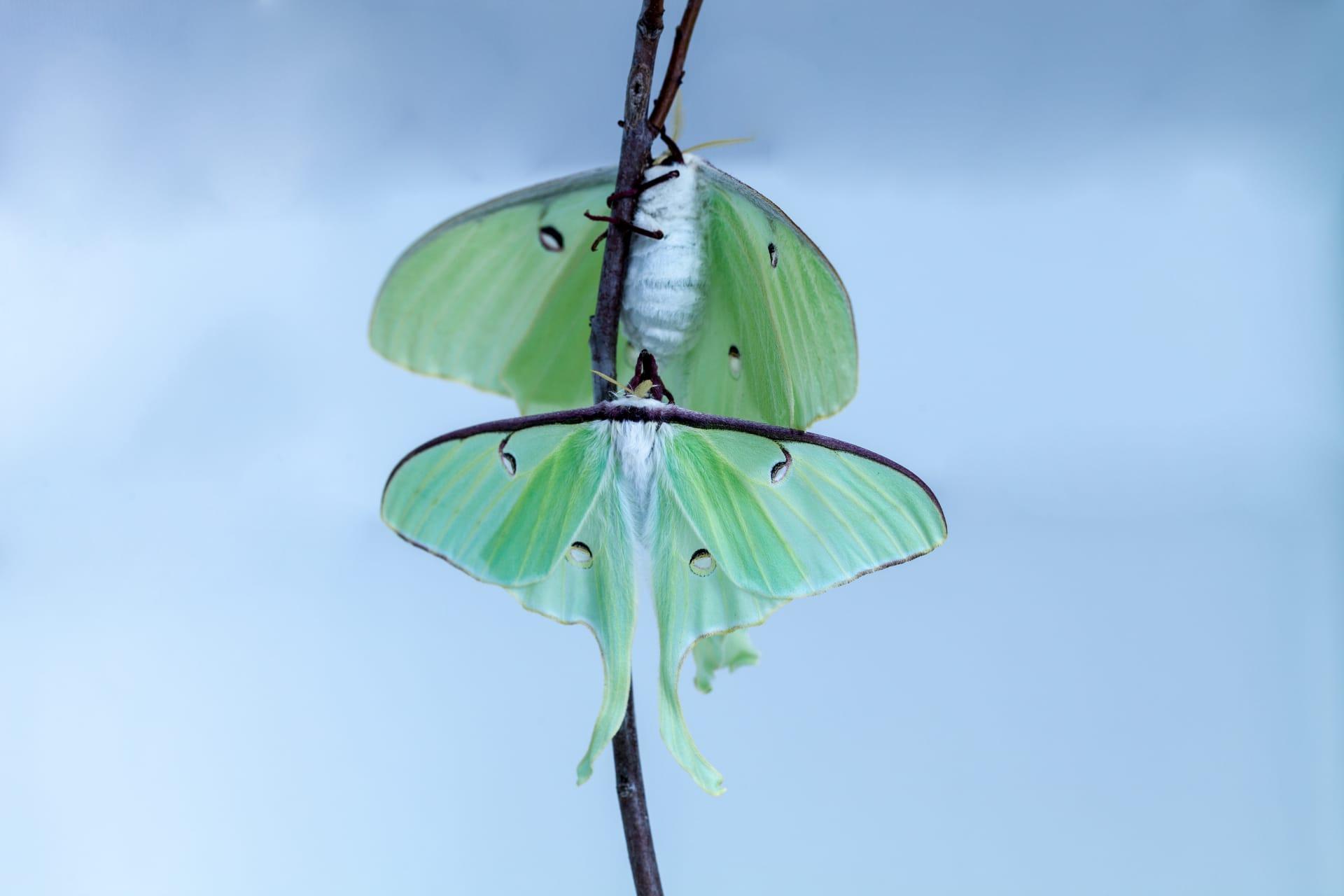Luna Moth Characteristics
- Home /
- Mini Encyclopedia /
- Animal /
- Luna Moth Characteristics
1
The Luna Moth, known scientifically as Actias luna, is a remarkable and easily recognizable moth due to its unique physical characteristics. These moths boast a wingspan ranging from 3 to 4.5 inches (7.6 to 11.4 cm), making them one of the larger moth species found in North America. Their vibrant, lime-green wings are distinct, with each hind wing ending in a long, flowing tail. Luna Moths also display eye spots on their wings, believed to deter predators. Interestingly, these moths have a relatively short lifespan, living only about a week after reaching adulthood. This brief life stage is focused primarily on reproduction, as adult Luna Moths do not have functioning mouths and therefore do not eat during their adult life.
One of the Luna Moth's most distinctive features is its long, tapering hindwing tails. These tails are not just for show; they play a crucial role in the moth's survival. Researchers have found that these tails are an evolutionary adaptation for evading predators, particularly bats. The fluttering of the tails as the moth flies creates a confusing echo pattern that makes it difficult for echolocating bats to pinpoint the moth's actual location. This adaptation is a stunning example of nature's ingenuity in the face of predation, allowing the Luna Moth to evade one of its most common predators.

2
Question: Why are Luna Moths so rarely seen, despite their large size and bright coloration?
Answer: The elusive nature of Luna Moths can be attributed to several factors. Firstly, their bright green coloration, while conspicuous in a museum or photo, actually serves as excellent camouflage against the green leaves of their habitat. This makes them surprisingly difficult to spot in the wild. Secondly, Luna Moths are primarily nocturnal, meaning they are active at night when it is harder for humans to observe them. Lastly, their adult life stage is incredibly short, typically lasting just a week. This brief window, combined with their nocturnal habits and effective camouflage, makes encountering a Luna Moth a rare and special event for nature enthusiasts.

3
Luna Moths exhibit unique movement characteristics, primarily influenced by their life as nocturnal creatures. They are known for their gentle and somewhat fluttery flight pattern, which is quite different from the straight, fast flight of many other moth species. This fluttering motion is more erratic, making it harder for predators to predict their path. Additionally, their large wings give them a graceful and somewhat slow appearance in the air, adding to their mystical allure.
As for feeding, Luna Moths exhibit a fascinating trait: adult Luna Moths do not eat at all. They lack a functional mouth and digestive system. This might seem like a disadvantage, but it is an adaptation that allows them to focus entirely on reproduction during their brief adult life. The energy required for their adult activities is stored during their larval stage, where they feed voraciously on the leaves of various tree species, including walnut, hickory, and sweet gum.

4
Luna Moths are found in deciduous hardwood forests across North America, from East Texas to Nova Scotia in Canada. These environments offer the ideal habitat, providing both the food sources required during their larval stage and the necessary foliage for camouflage as adults. They thrive in areas that are undisturbed and rich in biodiversity, which supports a healthy ecosystem for their development and survival.
The reproductive cycle of Luna Moths is both fascinating and efficient. After emerging from their cocoons, the primary focus of adult Luna Moths is to find a mate. Females release a pheromone to attract males, who can detect these chemical signals from miles away with their feathery antennae. After mating, the female lays her eggs on the underside of leaves, which will hatch into caterpillars. These caterpillars will then go through several molts before spinning a cocoon, where they will transform into the next generation of Luna Moths, continuing the cycle of life for this enchanting species.

5
Book: "The Secret Life of Moths" by Dr. Hannah Reynolds, published in the United States in 2015. This book offers a comprehensive look at the lives of various moth species, including the Luna Moth. Dr. Reynolds, an entomologist, delves into the fascinating world of these nocturnal insects, discussing their life cycles, habitats, and unique adaptations. She provides an insightful and accessible exploration of moths, shedding light on the often-overlooked yet captivating aspects of their existence.
Book: "Wings in the Night: The Mysteries of Moth Evolution" by Professor Liam Turner, published in the United Kingdom in 2018. Professor Turner focuses on the evolutionary journey of moths, with a special emphasis on species like the Luna Moth. The book examines how these creatures have adapted over millions of years to survive in various environments, facing natural predators and environmental changes. Rich in detail and supported by scientific research, this book offers readers a deeper understanding of the role moths play in our ecosystems and the evolutionary marvels they represent.